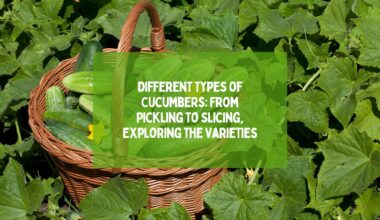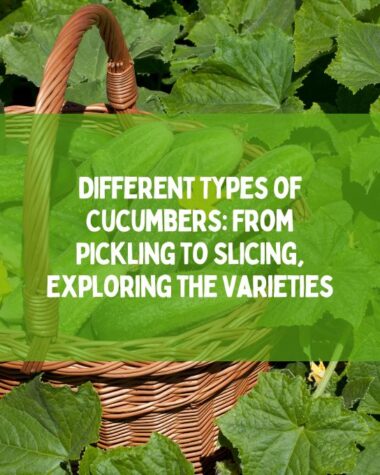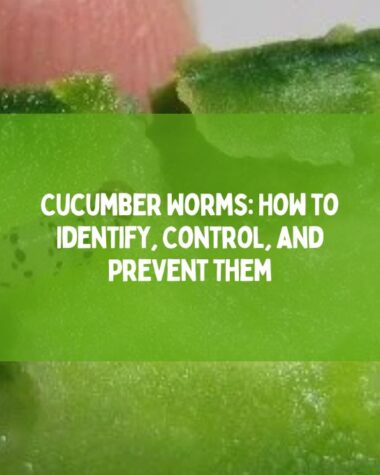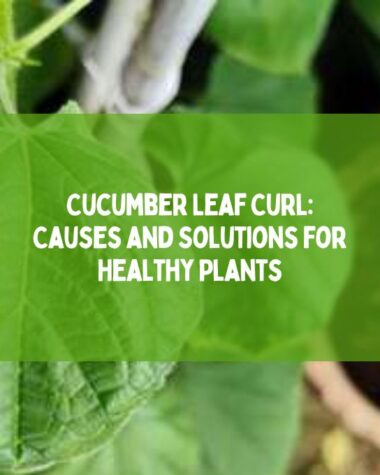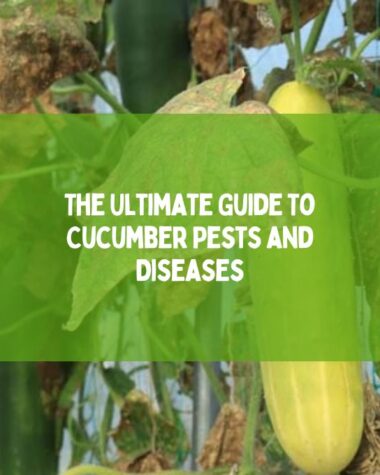When you have the right knowledge and techniques, growing cucumbers organically can be rewarding, as you can enjoy delicious, nutritious cucumbers without using synthetic fertilizers and pesticides.
In this ultimate cucumber growing guide, I’ll guide you on how to grow cucumber plants organically and how to use natural methods to ensure that your plants are healthy and productive.
As a seasoned gardener, here I’ll explain the best time of year to plant, how to prepare your soil, and how to care for your cucumber plants throughout the growing season.
What Are Soil Requirements for Growing Cucumbers?
Growing cucumbers is not difficult, but having the right soil conditions can make a big difference in the success of your crop. To grow healthy cucumbers, the soil should be nutrient-rich, loose, and well-draining. It should also have a pH balance between 6.0 and 7.0.
To achieve this balance, you can add organic matter such as compost or aged manure to the soil. Additionally, you will need to till the soil before planting to ensure that it is soft and free of debris.
When it comes to how to grow cucumbers, it’s important to keep in mind that they require plenty of sunlight. For optimal growth, they should receive full sun for at least 6–8 hours of direct sunlight per day.
Additionally, if your area experiences long periods of drought, you may want to consider setting up a drip irrigation system or a sprinkler system to ensure that your cucumber plants get enough water.
Also, make sure to put mulch around your cucumber plants after you plant them to keep in moisture and stop weeds from growing. Following these steps will help ensure that your cucumbers have the ideal soil conditions for optimal growth and health.
How To Grow Cucumbers Organically? (A step-by-step Guide)
Growing cucumbers organically is a fun and easy thing to do if you plan and care for them the right way. If you’re looking for tips on how to grow cucumbers organically, this guide will provide you with all the information you need to get your garden started. From soil preparation to harvesting, learn how to create a lush and productive cucumber garden that will provide you with plenty of delicious fruits!
Follow these steps to grow cucumbers in your garden organically.
Step 1: Choosing the Right Variety
When choosing a cucumber variety, consider the climate and soil conditions of your garden. For example, pick a variety that requires minimal fertilizer if you live in an area with poor soil quality. You should also make sure the cucumber variety you select is suitable for your climate. Once you’ve selected a suitable variety, it’s time to learn how to grow cucumbers.
Related Reading:
- What are the best cucumber varieties for greenhouses?
- The Best Cucumber Varieties For Growing In Pots
Step 2: Garden Preparation
It is important to prepare your garden before planting cucumbers. Choose a sunny spot with good drainage and loosen the soil with a garden fork or tiller. If necessary, amend the soil with organic matter such as compost or manure.
Cucumbers need 6-8 hours of sun each day, so adjust your planting area accordingly. Once you have the area prepared, you can start planning how to grow cucumber plants organically in your garden.
Step 3: Planting Cucumbers
The best time to plant cucumbers is when the soil temperature has reached 60-90 degrees Fahrenheit.
- Plant cucumber seeds in an area with full sun and good air circulation.
- Prepare your planting beds by loosening the soil to a depth of 8-10 inches.
- Plant cucumber seeds 1/2 inch deep and 4-6 inches apart in rows.
If you are planting seedlings, dig a hole 2-3 times bigger than the root ball and water regularly until established. Follow these steps to grow cucumbers organically!
Step 4: Watering Cucumber Plants
Watering is one of the most important aspects of how to grow cucumbers organically.
- It is best to water the plants at the base of the stem rather than on top of the leaves. Cucumbers need about 1-2 inches of water per week, which is best supplied through a slow-drip irrigation system.
- During hot weather, water the plants more frequently.
- Don’t let them dry out too much, as this can cause the plants to become stressed and produce fewer fruits.
Step 5: Fertilizing Cucumber Plants
Organic fertilizers are a great way to add essential nutrients to your soil while still growing cucumbers organically. It’s important to understand the type of fertilizer that works best for your cucumber plants, as different types of cucumber varieties require different types of fertilizers.
Best & Recommended Fertilizers for Cucumber Plants
- Cucumber Fertilizer Greenway Bio
- Joyful Dirt Premium Fertilizer
- Dr. Earth Organic Vegetable Fertilize
- Miracle-Gro Vegetable Formula
- Jobe’s Organic Vegetable Fertilizer
- MasterBlend Vegetable Fertilizer
Organic fertilizer can be applied to the soil before planting or during the growing season. Make sure to read the instructions and dosage on the package to ensure the correct amount is applied for maximum results.
Applying organic fertilizer regularly throughout the season is essential to successfully growing cucumbers organically.
Step 6: Cucumber Plant Care
Caring for cucumber plants is essential to maximize yield and ensure the plants’ health.
Follow these cucumber plant care tips.
- When caring for cucumbers, make sure the soil is kept evenly moist.
- About once every two weeks, use fertilizer to give cucumbers the nutrients they need to grow.
- Avoid over-watering, as this can lead to diseases and pests.
- Mulch around the base of the plants to help retain moisture and reduce weed growth.
- To prevent diseases, practice crop rotation and regularly check the plants for any signs of pests.
With proper care, you will be able to enjoy a bountiful harvest of cucumbers!
Step 7: Harvesting Cucumbers
Harvesting cucumbers is one of the most rewarding steps in learning how to grow cucumbers. Cucumbers are ready for harvest when they are fully grown and slightly soft to the touch.
To pick cucumbers, use scissors or a sharp knife to cut them from the vine. When harvesting, remember to leave some on the plant for further growth. Store the harvested cucumbers immediately in a cool place, and enjoy their freshness and flavor.
Related Reading:
How to Grow Armenian Cucumber Plant – Armenian Cucumber Complete Guide
Step 8: Cucumbers Storage
Once the cucumbers are harvested, it is important to store them correctly in order to preserve their freshness and flavor. The best way to store cucumbers is by wrapping them in a damp paper towel and placing them in a plastic bag in the refrigerator. This will keep them fresh for up to two weeks.
If you want to extend the shelf life of cucumbers even further, blanch them before freezing them. This will help keep the flavor intact and make them easier to use in dishes later on. Growing cucumbers organically is only the beginning. Proper storage is essential for achieving their full flavor.
Tips for Preventing and Controlling Cucumber Pests
Pests can be a major problem when it comes to growing cucumbers. The most common cucumber pests include aphids, squash bugs, and cucumber beetles. To keep these pests away, it’s important to monitor your plants and take preventive measures early on.
Keep the area around the cucumber plants free of weeds and debris to prevent an increase in pest populations. Handpicking any pests you find is another way to help reduce their numbers. Spraying with insecticidal soap or neem oil can also help to keep cucumber pests at bay.
If you’re wondering how to grow cucumbers organically, using companion planting is another great option. Planting herbs like basil or marigolds nearby can help deter cucumber pests from attacking your plants.
What Are the Best Cucumber Companion Plants?
When it comes to cucumber companion planting, selecting plants that do not compete with each other for space and nutrients is essential for growing a successful cucumber crop. Carrots, parsnips, radishes, and onions are all good choices for companion planting with cucumbers as they do not encroach on each other’s territory.
In addition to these companion plants, you can also grow marigolds, nasturtiums, and dill near cucumber plants. Marigolds are thought to keep cucumber beetles away, while nasturtiums are thought to draw them away from cucumbers. Dill attracts beneficial predatory insects that can help keep the cucumber beetles at bay.
Be sure to keep companion plants well spaced out so they can all get the adequate amount of light, air circulation, and water needed to thrive. And be sure to check regularly for signs of pests or disease on the companion plants, as these can easily spread to your cucumber plants.
With the right companion plants and careful monitoring, you can have success when it comes to growing cucumbers organically.
